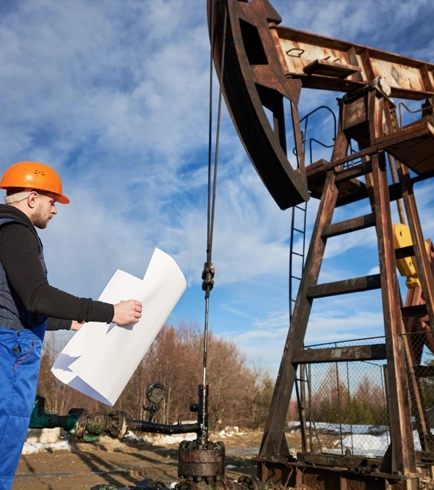Dec . 21, 2024 02:23 Back to list
submersible deep well pump
Submersible Deep Well Pumps An Essential Solution for Groundwater Extraction
In a world increasingly reliant on sustainable water sources, submersible deep well pumps have emerged as a critical technology for accessing groundwater from deep aquifers. These pumps are designed to operate underwater, allowing them to efficiently extract water from depths that are often challenging to reach with traditional pumping methods. This article explores the construction, operation, and applications of submersible deep well pumps, as well as their benefits and challenges.
Construction and Operation
A submersible deep well pump typically consists of a motor, pump body, and various hydraulic components. The motor is sealed within a watertight casing to prevent water intrusion, allowing it to operate at great depths without being damaged. The pump body is designed to draw water in through an intake screen and then discharge it through a pipe to the surface.
The operational principle of a submersible pump is relatively straightforward. When the motor is powered, it activates an impeller system that creates a pressure differential, drawing water into the pump. The impellers push the water upwards through a vertical discharge pipe. This design minimizes the risk of cavitation and maximizes efficiency, making submersible pumps ideal for deep well applications where static water levels can be significantly low.
Applications
Submersible deep well pumps find applications in various sectors including agriculture, municipal water supply, industrial processes, and geothermal energy systems. In agriculture, these pumps are indispensable for irrigation in regions where surface water is scarce. Farmers rely on submersible pumps to draw water from deep aquifers to ensure a consistent water supply for their crops.
Municipalities utilize submersible pumps to provide water to communities, particularly in areas lacking adequate surface water systems. These pumps can draw large volumes of water 24/7, ensuring that residents have access to clean drinking water.
In industrial applications, submersible pumps are used to manage water levels in mines and construction sites, facilitating operations by removing excess water and maintaining optimal conditions. Additionally, geothermal systems utilize these pumps to extract water for energy generation, providing an environmentally friendly energy source.
Benefits of Submersible Deep Well Pumps
submersible deep well pump

One of the standout benefits of submersible deep well pumps is their efficiency. These pumps are designed to operate submerged, which means they can move water with minimal energy consumption. Their ability to operate under high pressures makes them suitable for deeper wells, where traditional pumps would struggle or fail.
Another critical advantage is their durability. Submersible pumps are built to withstand harsh conditions, including high temperatures and corrosive environments. This durability translates into longer operational lifespans and reduced maintenance costs, thereby providing significant economic benefits over time.
Moreover, submersible pumps are less noisy than surface pumps, as they operate below ground level. This feature is particularly beneficial in residential areas or locations where noise pollution is a concern.
Challenges and Considerations
Despite their many advantages, submersible deep well pumps are not without challenges. One primary concern is the potential for pump failure due to electrical issues or mechanical wear over time. To mitigate this, regular maintenance and monitoring are crucial.
Additionally, the installation of submersible pumps can be complex and requires skilled labor. Proper sizing and selection of pumps based on the specific requirements of the application are essential for optimal performance. Users must consider factors such as well depth, water flow rate, and desired pressure to ensure they select the appropriate pump.
Finally, groundwater depletion is an overarching concern associated with excessive use of deep well pumps. As populations grow and water demands increase, responsible management of water resources becomes imperative to prevent long-term environmental impacts.
Conclusion
Submersible deep well pumps represent a vital technology for accessing and managing groundwater resources. Their efficient operation, durability, and versatile applications make them an integral part of modern water management systems. However, with great power comes great responsibility; it is crucial to use this technology sustainably to ensure access to clean water for future generations. By understanding the benefits and challenges associated with submersible deep well pumps, users can make informed decisions that support both their needs and the health of our planet's water resources.
-
Submersible Water Pump: The Efficient 'Power Pioneer' of the Underwater World
NewsJul.01,2025
-
Submersible Pond Pump: The Hidden Guardian of Water Landscape Ecology
NewsJul.01,2025
-
Stainless Well Pump: A Reliable and Durable Pumping Main Force
NewsJul.01,2025
-
Stainless Steel Submersible Pump: An Efficient and Versatile Tool for Underwater Operations
NewsJul.01,2025
-
Deep Well Submersible Pump: An Efficient 'Sucker' of Groundwater Sources
NewsJul.01,2025
-
Deep Water Well Pump: An Efficient 'Sucker' of Groundwater Sources
NewsJul.01,2025
-
 Submersible Water Pump: The Efficient 'Power Pioneer' of the Underwater WorldIn the field of hydraulic equipment, the Submersible Water Pump has become the core equipment for underwater operations and water resource transportation due to its unique design and excellent performance.Detail
Submersible Water Pump: The Efficient 'Power Pioneer' of the Underwater WorldIn the field of hydraulic equipment, the Submersible Water Pump has become the core equipment for underwater operations and water resource transportation due to its unique design and excellent performance.Detail -
 Submersible Pond Pump: The Hidden Guardian of Water Landscape EcologyIn courtyard landscapes, ecological ponds, and even small-scale water conservancy projects, there is a silent yet indispensable equipment - the Submersible Pond Pump.Detail
Submersible Pond Pump: The Hidden Guardian of Water Landscape EcologyIn courtyard landscapes, ecological ponds, and even small-scale water conservancy projects, there is a silent yet indispensable equipment - the Submersible Pond Pump.Detail -
 Stainless Well Pump: A Reliable and Durable Pumping Main ForceIn the field of water resource transportation, Stainless Well Pump has become the core equipment for various pumping scenarios with its excellent performance and reliable quality.Detail
Stainless Well Pump: A Reliable and Durable Pumping Main ForceIn the field of water resource transportation, Stainless Well Pump has become the core equipment for various pumping scenarios with its excellent performance and reliable quality.Detail
